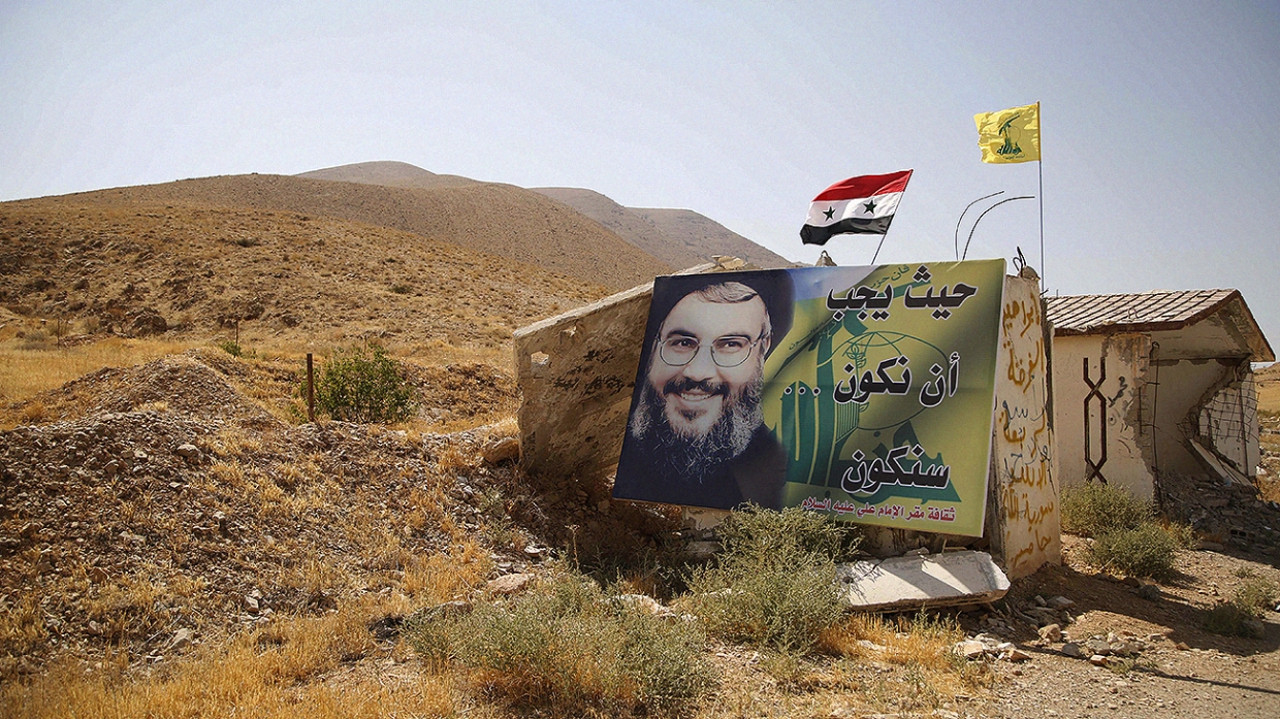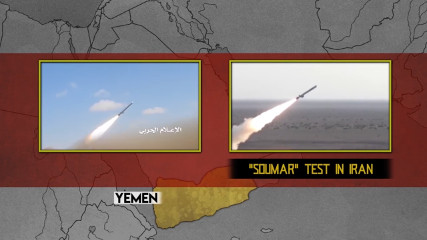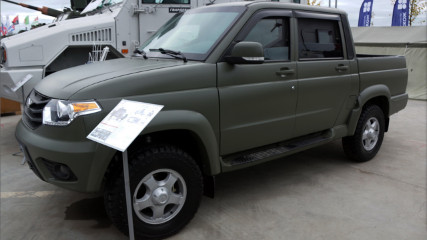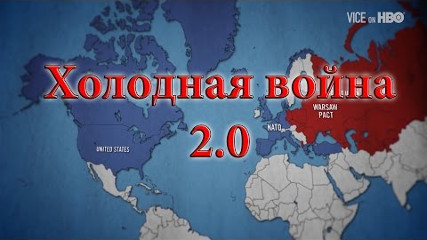Хезболла (Фильм)
- https://www.youtube.com/watch?v=mnCE4gcAYoY">
Хезболла (Фильм)
Хезболла. Документальный фильм об истории движения, его военной мощи и борьбе против Израиля.
Авторский перевод Романа Попова - Хезболла. Документальный фильм об истории движения, его военной мощи и борьбе против Израиля.
Сокращения, используемые в фильме:
АСБ - Аппарат специальной безопасности. Подразделение Хезболлы, специализирующееся на операциях за рубежом;
БРМД - баллистическая ракета малой дальности;
ИГИЛ - Исламское государство Ирака и Леванта. Террористическая группировка,запрещена в РФ;
КСИР - Корпус Стражей Исламской Революции. Элитное иранское военно-политическое формирование;
МАГАВ - израильская пограничная полиция;
ПТРК - противотанковый ракетный комплекс;
РСЗО - реактивная система залпового огня;
ЦАХАЛ - Армия обороны Израиля;
ЯМАС - входящее в МАГАВ подразделение антитеррора, маскирующееся под арабских жителей.
Движение «Хезболла» («Партия Бога») было основано в Ливане в 1982 году представителями шиитской части населения, которых не устраивала светская, по их мнению, направленность умеренной шиитской партии Амаль. Кроме того, в рядах шиитов существовали разногласия касательно необходимости противостояния Израилю с применением новых организационных форм и методов ведения боевых действий. По словам Генерального секретаря партии – Хасана Насраллы – с момента своего основания Хезболла была исключительно межливанским образованием, полагавшимся на поддержку и помощь со стороны палестинских и ливанских партий, в то время как поддержка со стороны Ирана и Сирии начала оказываться уже позднее.

С первых же дней деятельность Хезболлы основывалась на 3-х принципах. Первый – ислам провозглашается идеологической, богословской и практической основой деятельности организации. Во-вторых – основная цель партии – борьба против оккупации Израилем Ливана и Палестины, а также против господства сионистов. Третье – партия признает догму иранских шиитов, гласящую о необходимости «велаяте факих». Данный принцип заключается в том, что в период второго пришествия Двенадцатого Имама Мухаммада Аль-Махди власть над шиитами перейдет к имамам.
Структура и руководящее звено партии
С точки зрения организации структура Хезболлы базируется на нескольких идеологических принципах и интегрирована в структуру государства, которое не оказывает никакого влияния на деятельность движения. Во главе Хезболлы стоит Совет Шуры, состоящий из 7 членов (6 духовных лидеров – улемов – и один светский лидер). Члены совета избираются Центральным советом (Аль-Маджлис Аль-Марказис), состоящим из 200 наиболее влиятельных членов движения. Процесс избрания в Совет Шуры происходит в 3 этапа. На первом этапе происходит отбор кандидатов (как правило – 70-80 человек) как улемов, так и светских, в рамках критериев, установленных высшим руководством. Прошедшие первый этап имеют право на участие во втором этапе. Другими словами, имеют право стать кандидатами в Совет Шуры. Как правило, после второго этапа остается 10-15 человек. На заключительном этапе происходит избрание 7 членов Совета Шуры.
Решения Совета окончательны и обладают вероучительным значением для всех членов партии. Принимаются данные решения либо единогласно, либо большинством голосов. В случае тупикового конфликта или раскола в Совете Шуры, решения по спорным вопросам принимает лидер партии, чья позиция окончательна, обязательна к исполнению всеми органами управления и не может быть обжалована. Именно таким образом представлен принцип «велаяте факих» и избегается раскол в правящей верхушке.

Вся текущая деятельность партии осуществляется через административно-исполнительный орган управления, известный также как Шура Танфиз. Шура Танфиз состоит из 5 советов:
1) Исполнительный совет (ответственный за политические и организационные вопросы, включая общественную, культурную и просветительскую деятельность)
2) Политбюро (отвечает за внутрипартийные вопросы)
3) Парламентский совет (занимается деятельностью Хезболлы в парламенте Ливана)
4) Судебный совет (выносит решения по религиозным вопросам, осуществляет арбитраж в спорных ситуациях на основе исламского права)
5) Совет джихада (управляет движением, включая вопросы общего надзора, вербовки, обучения, оснащения и обеспечения безопасности)
Как правило, каждый совет возглавляется членом Совета Шуры.
Генеральным секретарем, а также верховным главнокомандующим вооруженными формированиями движения является Хасан Насралла. В составе руководства также присутствует его заместитель, духовный лидер, являющийся также верховным судьей, несколько членов законодательных органов Ливана, командующий военными формированиями в Южном Ливане и региональные руководители организации. В состав Исполнительного совета входят различные управления, ответственные за определенные сферы деятельности: социальное обеспечение, здравоохранение, информацию, прессу, финансирование, внешние связи, координацию.
HEZBOLLAH – CAPABILITIES AND ROLE IN THE MIDDLE EAST (FULL DOCUMENTARY)
Hezbollah is a social and political movement with a strong armed wing. It was formed in 1980s. Hezbollah’s creation was conditioned by the aspiration of the Shia population of Lebanon to meet the challenges of Israeli expansion and Western “new-style” colonialism.

The Hezbollah (“Party of God”) movement was formed in 1982 in Lebanon by a segment of the Shia community displeased with the secular, in their view, nature of the Amal moderate Shia party. There were also disagreements concerning whether Israel should be confronted using new organizational forms and methods of warfare. According to its General Secretary Hasan Nasrallah, since its formation, Hezbollah was a purely intra-Lebanese creation, relying on the support and aid from the Palestinian and Lebanese parties, while the support from Iran and Syria came later.
Since the very beginning, Hezbollah’s activities have been based on three principles. First, Islam is declared an ideological, doctrinal, and practical basis for the organization’s functions. Secondly, its main aim is the struggle against Israeli occupation of Lebanon and Palestine and against Zionist domination. Third, it recognizes the Iranian Shia thesis concerning the necessity of Vilayat-e-Fakih. This Shia doctrine asserts that during the era of the 12th Great Reappearance of Imam Muhammad al-Mahdi the leadership over the Shia is transferred to high-ranking Shia clerics.
Structure and Decision Making
Hezbollah, as an organization, has a structure based on certain ideological principles and exists within the framework of a state, that has no actual influence on the movement’s activities. The party is led by the Shura Council consisting of 7 members (six spiritual leaders—ulemas—and one secular leader). The members are elected by the Central Council (Al-Majlis al-Markazis), consisting of the 200 most authoritative members of the movement. Shura Council elections consist of three phases. The first is the candidate selection (usually 70-80), both clerics and secular individuals who satisfy the criteria set by the top leaders. Those who pass this stage have the right to participate in the second stage. In other words, they become candidates for the Shura Council. As a rule, 10-15 people make it to the second round. The final phase consists of the direct election of the 7 Shura Council members.
Council decisions are final and religiously binding for all party members. They are adopted either unanimously or by the majority of votes. If there is a deadlock or a split within Shura Council, issues are decided by the party leader, whose decisions are final and obligatory on all administrative institutions, and cannot be challenged. This is how the principle of Vilayat-e-Fakih is observed and splits within the ruling elite are averted.
The actual operations of the party are conducted by the administrative executive apparatus, known as Shura Tanfiz. It consists of five councils:
Executive Council (oversight over political and organizational matters, including social, cultural, and educational activities);
Politburo (addresses intra-movement matters);
Parliamentary Council (concerns itself with Hezbollah activities in the Lebanese legislature);
Judicial Council (issues religious resolutions and carries out arbitration on matters of disagreement, relying on Islamic law); and
Jihad Council (directs the movement, including oversight, recruitment, training, equipment, security).
Each council is usually headed by a Shura Council member.
The movement General Secretary is Hasan Nasrallah, who is also the supreme commander of its armed formations. Leadership also includes his deputy, a spiritual leader who is also the supreme judge, some Lebanese legislators, the military formation commander for Southern Lebanon, and regional leaders of the organization. The Executive Council has various departments responsible for specific areas of activity: welfare, healthcare, information, press, finance, external communications, coordination.
Armed Formations and Their Peculiarities
Assessments of Hezbollah’s armed strength vary. Iran’s FARS news agency data from October 2016 put Hezbollah’s armed strength at no less than 65,000 troops, including reserves. Of them, 21,000 are professional soldiers with constant training. According to the 2017 Military Balance, currently 5-8 thousand Hezbollah troops are fighting in Syria.
Bekaa Valley: the commander’s responsibilities include control over arms shipments from Iran through Syria for the “Sheikh Abdallah” military camp that’s under joint command by the Hezbollah and the Syrian army. According to various sources, this region’s forces consist of at least 7 infantry battalions with 252 people each. Three of them are motorized.
South Beirut: according to various sources, this region includes at least two battalions of 252 troops, one of them motorized.
South Lebanon: after the Taif treaty of 1989, Hezbollah formations were reorganized and placed under a unified command. The current commander is responsible for Hezbollah military and Special Security formations and may also command Lebanese Army units in South Lebanon. This region includes at least 7 battalions of 252 troops each, five of them motorized.
Moreover, one should note the nontrivial fact of the existence of a full-scale, by Iranian, NATO, and Russian measures, tank regiment. In November 2016, near the city of al-Quiseir (Homs province, Syria), there was an inspection of Hezbollah equipment. The photos showed T-55, T-62, and some T-72 tanks, some 2S1 Gvozdika howitzers, BMP-1, and -2, M113 APCs with 14.5mm machine-guns, ZSU-57-2 SPAA. Most of this equipment apparently came from SAA arsenals and was obtained from the Lebanese Army and possibly Iran.
Of most interest are the hybrids assembled using Kvadrat (SA-6) SAM tracked chassis and Soviet-era KS-12 85mm and Ks-19 100mm AA guns. While their effectiveness against modern aircraft and drones is doubtful, they are useful as direct fire support against land targets. Other interesting weapons are the modern Kornet ATGMs mounted on quadricycles. These self-propelled ATGMs are able to effectively fight any modern tank, including Israeli.
By all appearances, this unit was formed to prosecute the war in Syria, where thousands of Hezbollah fighters are constantly on the front lines. The absence of direct fire support such as tanks and artillery undermines the success of operations. Therefore it’s logical to assume that Hezbollah decided to assemble an arsenal of its own armor and accompanying artillery to ensure battlefield success.
Being a fully-fledged political and military organization, Hezbollah understands that it is surrounded by enemies such as Israel and radical Sunni Islamists. Therefore having a tank regiment with experienced crews is of vital importance, as the unit represents a serious force by the standards of Lebanon and the adjacent countries. The prolonged civil war in Lebanon, the permanent stand-off with Israel, and now also the struggle against Sunni Islamists, in other words, the constant balancing on the edge between war and peace, makes the movement flexible in its command arrangements and able to quickly and appropriately react to emerging problems.
One can also draw the conclusion that the paramilitary wing of the Hezbollah, in spite of external attributes of a partisan movement, which it was 20-30 years ago, is gradually becoming a fully-fledged army with a training establishment, a command structure, and a logistical segment.
Cadre Selection and Training
The preparation of a future fighter starts at a very young age. Kids aged 6 are involved in discussions and as they grow, they receive more advanced political and religious preparation. A sample training regimen includes: Studying Koran, A day at the mosque, I love my country, How to run a household, Summer camp, I submit to my leader. Younger kids’ uniform, as a rule, includes blue shirts with epaulettes, white scarves, and pins with the image of Khomeini.
Older boys spend several weeks during the summer in camps in the south and in Bekaa Valley, where they train and acquire survival skills while obtaining more in-depth religious preparation and studying their native language and culture.
Then they transfer to the Imam al-Mahdi Scouts. One of the scouts’ missions is helping the poor. According to the Scouts head, if kids who lost their father or their brothers were left to their fate, they would withdraw inwardly and develop psychological problems such as aggression.
At the age of 17, those who excelled at the Scouts become members of Taabia, or the reserves.
At the same time, education does not seek to promote absolute hatred toward Israel, despite what Western journalists love to depict. The education system is first and foremost based on developing a national and religious identity, the context in which the Shia community of Lebanon exists.
In an interview provided by a Hezbollah fighter, it was noted that those who choose political independence become social pariahs. Such people can’t even visit their villages, given that the family and the society hate them.
Cadre troops are focused on combat training, and each receives a specialty such as an ATGM gunner, a sniper, or demolitions. Regular Hezbollah fighters undergo training in specialized camps in Lebanon, Syria, and Iran (under IRGC officer leadership). They conduct training for the rank and file and select outstanding individuals for special units. Some of them become commanders, others are selected for the Special Security Apparatus.
Taabia reservists are engaged in protecting villages and are selected from the Scouts. Cadre fighters and reservists undergo service in one of the districts: Israel-Lebanon border and the Litania river area—Nasr Brigade, north of Litania—Badr Brigade, Bekaa Valley—Haidar Brigade.
Each Hezbollah brigade in south Lebanon has a sector in northern Israel that it is supposed to occupy. Combat and special training in each brigade take into account local geography. One should also note that border terrain is fortified: there is a large-scale network of tunnels, bunkers, minefields. Using the tunnels, Hezbollah can concentrate large number of troops on the needed attack sector without being spotted and attacked from the air
Due to fighting in Syria, Hezbollah opted to conduct training courses with reservists lasting 60-90 days. Commanders are also sent to the battle zone to obtain experience. Intensive operations and unavoidable losses have forced commanders and troops to remain in the war zone (murabata) for longer than their rotation periods. For the reservists, it was 15 days a year. Before the Syrian war, the border with Israel was considered such a zone. Currently, the rotation period in the Syrian war zone is 20 days and may be increased if the situation demands it. This is considered optimum, as it allows for having trained and rested troops available in case of any escalation on Israel border, and in Syria.
Here’s an example of a news report regarding deployment of Hezbollah units from May 20, 2017. The Radwan special unit and others were fully withdrawn from Syria and replaced by the Badr Brigade which is stationed in the eastern and northern part of the Aleppo province. Aziz Brigade was withdrawn from the outskirts of Palmyra and al-Qaem Brigade temporarily replaced it there.
Moreover, the Radwan unit was brought to an elevated alert level and sent to south Lebanon (Litania river and Shebaa farms on Israel border). Al-Jalil Brigade, intended for operations in Galilee in case of war with Israel, remained on its permanent positions in south Lebanon. Nasr Brigade, which is directly under Hasan Nasrallah, remained in reserve.
The Radwan unit was named after the head of Special Security department Imad Mugniyeh (pseudonym al-Hadja Radwan) who was killed in 2008. The unit has much experience in raids and is the most prepared for urban warfare, which makes it irreplaceable in Syria. If there is a new war between Hezbollah and Israel, it will be in the first line of attack.
Military Doctrine. Specifics of Fighting in Syria
Hezbollah leadership reviewed its concept of operations after the start of the Syria war. Before the war, the emphasis was placed on defensive ops in built-up areas with small units to inflict maximum troop and equipment losses on the IDF while simultaneously shelling Israel using large numbers of short- and medium-range rockets.
In Syria, Hezbollah realized that it had to wage offensive ops in cities. Therefore it reconsidered its training system, increased its rocket arsenal, and provided more heavy weapons and recon systems.
The first operation where Hezbollah took offensive using large units was the battle for el-Quseyr in April-June 2013. Some 1200-1700 best-trained Hezbollah troops took part in the battle. They were divided into 17 detachments, with later division into teams of 3-5 troops. Prior to the attack, the command performed recon of the city and its approaches, then divided the city into 16 sectors, one for each detachment. Each region had its codename. During the battle, this allowed for command of forces using open channels of communication without the enemy being able to take any countermeasures. Hezbollah command undertook the direction of SAA tank and artillery units near the city. Considering that the city was in the Islamist hands for over a year and was well-fortified, the ratio of losses was nevertheless 5:1 in favor of Hezbollah. The battle showed that with proper organization, a fortified city can be effectively attacked by a small force.
As far as the military direction of Hezbollah units in Syria by Iran is concerned, it seems probable that Iran directs Hezbollah units down to battalion level (sometimes down to company) using IRGC specialists from the al-Quds Force. It can’t be ruled out that IRGC specialists coordinate Hezbollah and local self-defense forces like the Kataib Hezbollah and Asaib Ahl al-Haq. Units smaller than a battalion don’t warrant the provision of specialists. There is a need for a large number of trained cadres able to command and provide assistance. One of the factors influencing cooperation in this instance is the language barrier—Arabic in Lebanon, versus Farsi in Iran.
Hezbollah became one of the factors which allowed to turn around the war in Syria, since its troops were able to fight in cities. The SAA, in 2011-12 was organized along 1970-80 lines to fight combined arms battles mainly against Israel. New realities have shown that this army was unable to fight as small units in the cities. Moreover, the SAA has not fought for a long time. Its last significant operations took place in 1982. Therefore it had no commanders with urban warfare experience. Hezbollah, on the other hand, has constantly fought Israel since the moment of its creation. Generations of commanders have honed their skills in the years of clashes and battles with the IDF, causing it serious losses during the 2006 war. Israel was forced to retreat from south Lebanon, and Hezbollah’s reputation has risen to unprecedented heights.

Israel’s military command is worried about Hezbollah’s operations in Syria, since its paramilitary wing will now be able to wage offensive ops using heavy weapons and a huge number of short-, medium-, and long-range rockets.
The fact that Hezbollah has become akin to a regular army is confirmed by IDF’s rethinking of its approach to the fight against it. First, IDF is preparing for fighting big formations, up to a brigade, whose task will be invading Israel and capturing villages or military bases. Second, it is paying special attention to combating tunnels, including technical and psychological preparation of its troops to fight in tunnels.


























